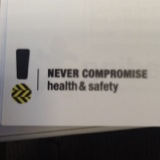Information
-
Document Number
-
Client / Site ID
-
Address
-
Conducted on
-
Prepared by
-
Time start
-
System Type
-
Category of System
- Category List
- L1
- L2
- L3
- L4
- L5
- P1
- P2
- M
-
Categories
L1
Designed for the protection of life and which has automatic detectors installed throughout all areas of the building (including roof spaces and voids) with the aim of providing the earliest possible warning. A category L1 system is likely to be appropriate for the majority of residential care premises. In practice, detectors should be placed in nearly all spaces and voids. With category 1 systems, the whole of a building is covered apart from minor exceptions
L2
Designed for the protection of life and which has automatic detectors installed in escape routes, rooms adjoining escape routes and high hazard rooms. In a medium sized premises (sleeping no more than ten residents), a category L2 system is ideal. These fire alarm systems are identical to an L3 system but with additional detection in an area where there is a high chance of ignition, e.g., kitchen) or where the risk to people is particularly increased (e.g., sleeping risk).
L3
Designed to give early warning to everyone. Detectors should be placed in all escape routes and all rooms that open onto escape routes. Category 3 systems provide more extensive cover than category 4. The objective is to warn the occupants of the building early enough to ensure that all are able to exit the building before escape routes become impassable
L4
Systems cover escape routes and circulation areas only. Therefore, detectors will be placed in escape routes, although this may not be suitable depending on the risk assessment or if the size and complexity of a building is increased. Detectors might be sited in other areas of the building, but the objective is to protect the escape route
L5
"all other situations" category, e.g., computer rooms, which may be protected with an extinguishing system triggered by automatic detection. Category 5 systems are the "custom" category and relate to some special requirement that cannot be covered by any other category
M
Manual systems, e.g. hand bells, gongs, etc. These may be purely manual or manual electric, the latter may have call points and sounders. They rely on the occupants of the building discovering the fire and acting to warn others by operating the system. Such systems form the basic requirement for places of employment with no sleeping risk.
P1
The system is installed throughout the building – the objective being to call the fire brigade as early as possible to ensure that any damage caused by fire is minimized. Small low risk areas can be excepted, such as toilets and cupboards less than 1m².
P2
Detection should be provided in parts of the building where the risk of ignition is high and/or the contents are particularly valuable. Category 2 systems provide fire detection in specified parts of the building where there is either high risk or where business disruption must be minimised -
L1
-
L2
-
L3
-
L4
-
L5
-
M
-
P1
-
P2
-
L1
-
Battery date checked
Items Inspected
-
Manual call points suitably sited
-
Manual call points are unobstructed
-
Manual call points are conspicuous
-
All exits, including new exits have manual call points
-
Automatic fire detectors suitable for building or use of occupancy
-
Spur to panel wired in FP200 or other suitably rated fire cable
-
Fused Spurs of correct type (Stating fire alarm do not switch off
-
Automatic fire detectors suitably sited
-
Fire alarm devices suitably sited
-
Clear space of 500 mm exists below each automatic fire detector (Clause 22.3n)
-
Each automatic fire detector's ability to receive the stimulus it's designed to detect has not been impeded by any other means
-
Building use or occupancy does not make existing types of automatic fire detector unsuitable for detection of fire or prone to unwanted alarms.
-
Additional fire detection and alarm equipment provided in any extensions or alterations to the building
-
System log book examined
-
Any faults recorded have been attended to
False Alarms
-
A: Activations within the last 12 months
-
B: Quantity of sensors on the system
-
Rate of false alarms during the previous 12 months recorded (Clause 30.2i) % = (A) divided by (B) times 100
-
Action taken in respect of false alarms complies with the recommendations of Clause 30.2j
Testing
-
Is this a full system test
Intermediate Test
-
Fire alarm functions of control indicating equipment checked by operation of at least one detector or manual call point in each circuit and entry made in log book indicating which initiating devices used for these tests
-
Operation of fire alarm devices
-
Percentage of detectors tested
-
Controls and visual indicators at control indicating equipment checked for correct operation
-
Ancillary functions of control indicating equipment tested
-
Does the system have automatic transmission
-
Radio systems serviced in accordance with manufacturer's recommendations
-
For control indicating equipment, manufacturer's checks and tests performed
-
Fault indicators and their circuits checked by simulation of fault conditions
-
Standby battery disconnected and full load alarm simulated
-
Specific gravity of each cell of vented batteries checked
-
Mains disconnected and batteries momentarily load tested (other than those within devices such as manual call points, detectors and fire alarm sounders of a radio linked system)
Inspection
-
Automatic fire detectors unpainted
-
Automatic fire detectors undamaged
-
Visual fire alarm devices not obstructed
-
Lenses of visual fire alarm devices are clean
-
Readily-accessible cable fixings secure
-
Readily-accessible cable fixings undamaged
Documentation
-
Cause and effect programme confirmed as being correct
Testing
-
Switch mechanism of every call point
-
Radio signal strengths checked for adequacy
-
Fire alarm devices checked for correct operation
-
Automatic fire detectors functionally tested. including heat detectors, point smoke detectors, optical beam smoke detectors, aspirating fire detection systems, carbon monoxide fire detectors, flame detectors and multi-sensor detectors
-
All unmonitored, permanently-illuminated filament lamp indicators at control indicating equipment replaced
-
Control indicating equipment manufacturer's annual checks and tests carried out
-
For fire detection systems that enable analogue values to be determined , it should be confirmed that each analogue value is within the range specified by the manufacturer
-
Supply Load Value
-
Alarm Load Value
-
Battery size Cmin = 'Aging Factor'(('Standby Period' x 'Supply Load')+ 'De-Rating Factor'('Alarm Load' x 'Alarm Time')) = (1.25 x (24' x 'Supply Load')) + (1.75 x ('Alarm Load' x .5))
-
Battery Size Installed
-
Checks recommended by manufacturers of other components of system carried out
-
Comments
Documentation
-
Fire alarm functions of control indicating equipment checked by operation of at least one detector or manual call point in each circuit and entry made in log book indicating which initiating devices used for these tests
-
Operation of fire alarm devices
-
Controls and visual indicators at control indicating equipment checked for correct operation
-
Ancillary functions of control indicating equipment tested
-
For control indicating equipment, manufacturer's checks and tests performed
-
Fault indicators and their circuits checked by simulation of fault conditions
-
Does the system have automatic transmission
-
Radio systems serviced in accordance with manufacturer's recommendations
-
Other equipment, manufacturer's checks and tests performed
-
Is a printer installed
-
Standby battery disconnected and full load alarm simulated
-
Specific gravity of each cell of vented batteries checked
-
Mains disconnected and batteries momentarily load tested (other than those within devices such as manual call points, detectors and fire alarm sounders of a radio linked system)
Arrangements
Arrangements in place for repair of faults or damage equipment
-
Records and documentation give information on maintenance arrangements. See Clause 40
-
User records faults or damage in log book
-
User arranges for repairs to be carried out as soon as possible
Sign Off
-
Follow up action required?
-
Comments
-
Clients E-Mail address
-
Engineers name and Signature
-
Auditors signature














